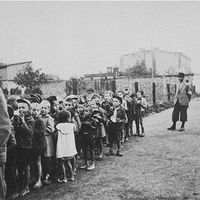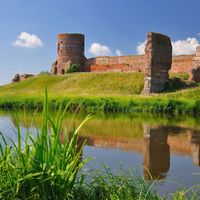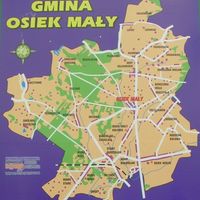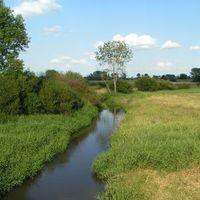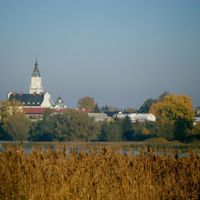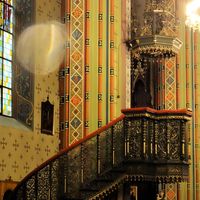Kolo County
8.44

Overview
Koło County, with its seat in the town of Koło, is a region in Poland with a rich history and diverse architecture, located in the eastern part of the Greater Poland Voivodeship. It was established in 1867 when it was separated from Konin County, and in 1999 it was restored as part of the administrative reform. The county is home to over 86,000 people, and its administrative structure includes 11 municipalities, including the town of Koło, as well as rural and urban-rural communes. The landscape of Koło County is characterized by lowland terrain, with abundant rivers such as the Warta, and lakes, including part of the Gopło Lake complex. The county is also known for its salt resources, led by the Kłodawa Salt Mine, and its lignite mining industry.
Culturally, the county has much to offer. It is home to numerous historical monuments, such as the Gothic Church of the Exaltation of the Holy Cross in Koło, the Renaissance Church of St. Lawrence in Lubotyń, and the Baroque Church of St. Adalbert in Brdów with the Pauline Fathers' monastery. The Museum of the Former Extermination Camp in Chełmno nad Nerem serves as a reminder of the region's difficult history, while the Museum of Ceramic Techniques in Koło celebrates local craftsmanship. Interestingly, Koło County was a place of significant ethnic diversity until World War II, when the Jewish community almost completely disappeared.
It is also worth mentioning the unique ecological aspects of the region, such as the Kawęczyńskie Brzęki Nature Reserve and the Dąbskie Błota ecological use area, which serves as a breeding ground for numerous bird species. Koło County is also known for its agricultural diversity, dominated by small farms transitioning towards organic farming.
Moreover, the region's transportation infrastructure consists of a network of national and provincial roads, as well as railway lines, ensuring easy access to the county seat and other towns. From a historical perspective, the county has undergone many administrative changes, from the partitions of Poland, through World War I and World War II, to modern forms of local government. At the forefront of the county's administration is Starosta (County Head) Robert Kropidłowski, who has held this position since 2018. Despite its many challenges, Koło County remains a place with a rich history, unique architecture, and cultural development, making it an interesting point on the map of Greater Poland.
Location
Country
2025 Wizytor | All Rights Reserved
